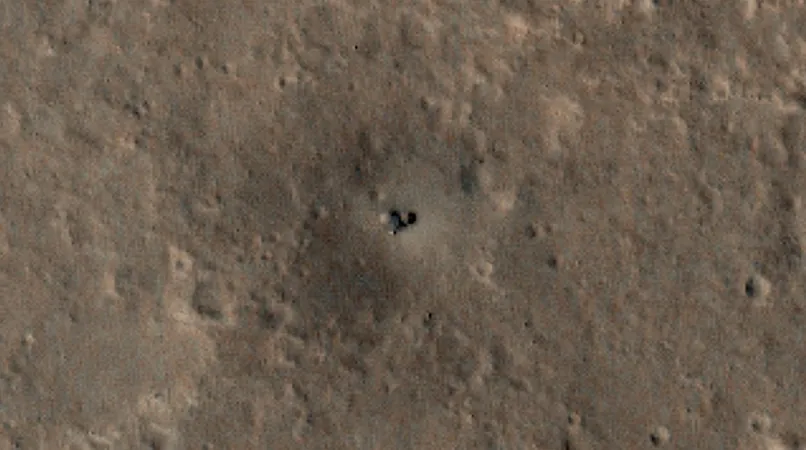
NASA’s InSight Lander Documented by Mars Reconnaissance Orbiter as Dust Accumulation Increases
2024-12-16
Author: Wei Ling
In a fascinating new snapshot taken by NASA’s Mars Reconnaissance Orbiter (MRO) on October 23, the agency revealed dramatic images of its retired InSight lander. This image captures the significant dust accumulation on InSight’s solar panels, which now closely mirror the reddish-brown hue of the Martian surface.
InSight, which landed on Mars in November 2018, made history as the first spacecraft to detect marsquakes, contributing valuable insights into the Red Planet's geological structure. Throughout its operational years, engineers leveraged data from InSight’s onboard cameras, alongside images from MRO's High-Resolution Imaging Science Experiment (HiRISE), to monitor dust levels on the lander's solar array—an essential factor for its energy generation.
However, InSight’s mission came to an unfortunate close in December 2022 when it lost power and ceased communications with mission control. In anticipation of a possible power resurgence should winds clear its solar panels, NASA’s engineers hoped for signs of life over the last two years. Sadly, with no response received, the agency will conclude its search for signals by the end of this year.
The recent HiRISE imagery serves as a poignant farewell to InSight, while also providing valuable scientific data on the evolving conditions of its landing site. “Even though we’re no longer hearing from InSight, it continues to enlighten us about Martian behavior,” remarked Ingrid Daubar from Brown University. By analyzing dust accumulation and the impact of Martian winds, scientists glean further understanding of the atmospheric and geological processes at play on Mars.
Dust, often described as a powerful agent of change on Mars, not only alters the landscape but also affects the atmosphere. Research into dust movement has been critical for future mission planning — particularly for those relying on solar power, as dust can compromise sensitive instruments and power generation systems.
Previously, while InSight was operational, researchers examined tracks left by dust devils, which swirl across the Martian terrain. Their studies showed a seasonal pattern, with activity peaking during the summer months. Additionally, HiRISE imagery has been instrumental in assessing the age of impact craters—an important facet of understanding Martian geology, as the accumulation of dust over time can obscure crater details and reveal surface age.
Another compelling aspect of crater analysis comes from studying the marks left by InSight’s retrorocket thrusters upon landing. Over time, these markings have increasingly blended in with the Martian terrain, demonstrating the relentless dust accumulation that characterizes the planet.
InSight was part of NASA’s Discovery Program and collaborated with numerous international partners, delivering groundbreaking science. While its mission may have ended, the data collected will continue to illuminate our understanding of Mars for years to come.
As we bid farewell to InSight, we look forward to the continuing advancements of other Mars missions, including the Perseverance and Curiosity rovers, which remain active and engaged in discovering the secrets of the Red Planet.
Stay tuned for more updates on Mars exploration as new data rolls in!




 Brasil (PT)
Brasil (PT)
 Canada (EN)
Canada (EN)
 Chile (ES)
Chile (ES)
 España (ES)
España (ES)
 France (FR)
France (FR)
 Hong Kong (EN)
Hong Kong (EN)
 Italia (IT)
Italia (IT)
 日本 (JA)
日本 (JA)
 Magyarország (HU)
Magyarország (HU)
 Norge (NO)
Norge (NO)
 Polska (PL)
Polska (PL)
 Schweiz (DE)
Schweiz (DE)
 Singapore (EN)
Singapore (EN)
 Sverige (SV)
Sverige (SV)
 Suomi (FI)
Suomi (FI)
 Türkiye (TR)
Türkiye (TR)